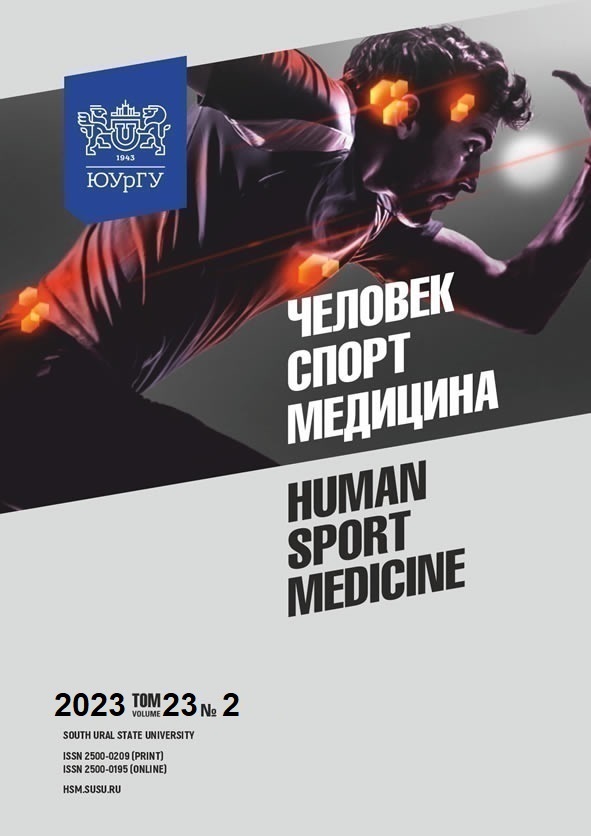THE FACTORS OF ANTIMICROBIAL PROTECTION IN SWIMMERS AND METHODS OF THEIR CORRECTION
Abstract
Aim. The paper is aimed at identifying changes in the immune status of swimmers with intense physical activity for developing endurance and substantiating the prospects for preventive correction with recombinant IL-2. Materials and methods. The study involved athletes from the Masters Swimming Federation, who formed the following study groups: IG1 (25–40 years) – 15, IG2 (40–60 years) – 15, IG3 (60+ years) – 5. The content of cytokines IL-2, IL-10, IL-8, IL-10, TNF-α, IL-1β, and IFN-α was determined in blood serum by enzyme immunoassay. The content of subpopulations of lymphocytes with the phenotypes CD3+, CD8+, CD4+, the CD4/CD8 ratio, CD25+, and CD16+ was measured by flow cytometry. The state of metabolic processes in the muscles was studied by the content of creatine phosphokinase and lactate dehydrogenase. The study was conducted 45 days before the start and at the end of the immunocorrection course (5 days before the start). For statistical calculations, a median of 25% was used (the Mann–Whitney test). Results. In 100% of the examined athletes, there were no clinical signs of inflammatory processes; in 87%, at the time of the study, changes in the factors of antimicrobial protection were recorded; in 39%, within the upper reference value, it was noted: a decrease in the production of IL-2, IFN-α, IL-2, and IL-10; an increase in the production of IL-8, IL-10, TNF-α, IL-1β, and IFN-α; a decrease in CD3+, CD4+, the CD4/CD8 ratio, CD25+, CD16+CD56+; increased levels of creatine phosphokinase and lactate dehydrogenase. The use of recombinant IL-2 led to the improvement of immunological parameters in volunteer athletes. Conclusion. It was found that the severity of immune dysfunctions and the differentiation of Th1/Th2 in the direction of Th1 can be risk factors for the occurrence of inflammatory diseases of a bacterial and viral nature in swimmers at the stage of preparation for starting events. The use of prophylactic immunotherapy with recombinant IL-2 in swimmers in the pre-competitive period eliminates immune disorders.
References
References on translit
Copyright (c) 2023 Human. Sport. Medicine

This work is licensed under a Creative Commons Attribution-NonCommercial-NoDerivatives 4.0 International License.















